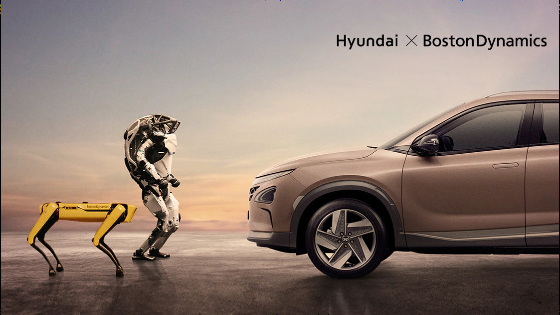Honda announces plans to invest approximately 10 trillion yen in EVs by fiscal 2030 in preparation for the EV boom of the late 2020s

Honda announced that it is 'confident that in the long term, the shift to EVs (electric vehicles) will progress steadily,' and revealed plans to invest approximately 10 trillion yen in EVs by fiscal year 2030. In addition, the company revealed that it has signed a memorandum of understanding with IBM to conduct its own research and development of next-generation semiconductors and software technologies for the development of cars using AI technology.
2024 Business Update Explanation Summary - Direction of Electrification Initiatives and Financial Strategy - | Honda Corporate Information Website

Honda signs memorandum of understanding with IBM on long-term joint research and development of next-generation semiconductors and software technologies to realize SDV in the future | Honda Corporate Information Site
On May 16, 2024, Honda held a briefing on its initiatives, focusing on four-wheeled vehicles. Honda explained that there is no change to its goal of achieving a 100% global sales ratio of EVs and FCEVs (fuel cell vehicles) in 2040, and that it plans to achieve a 40% sales ratio and produce more than 2 million EVs in 2030.
With this goal in mind, Honda will steadily make investment decisions at the appropriate time to advance three points: 'Introducing attractive EVs and FCEVs that are unique to the company,' 'Building a comprehensive EV value chain centered on batteries,' and 'Evolving production technologies and factories.' As a result, the company aims to achieve an operating profit margin of 5% in 2030 for its EV business.
Regarding batteries, the company is building a value chain centered on batteries, strengthening external partnerships and exploring in-house production. It aims to reduce costs and ensure stable procurement, and has set a goal of reducing battery costs procured in North America by more than 20% by 2030 compared to current battery costs.

Honda plans to start operating a joint venture battery factory with LG Energy Solutions in the United States in 2025. It plans to produce 40GWh of batteries per year. In the second half of the 2020s, the scope of operations will be further expanded, aiming to build a 'vertically integrated EV value chain centered on batteries' that will include all processes from raw material procurement to finished vehicle production, secondary battery use, and recycling.
For the production line of thin battery packs, which are key in EV production, a '6,000-ton class high-pressure die-casting machine, Megacast' will be introduced to a new battery case production line to be built at the Anna plant in Ohio, USA. This will significantly reduce the number of components and ancillary parts of a battery case, which currently exceeds 60, to just five.
Furthermore, based on the shared recognition that 'it is important to acquire the ability to independently research and develop next-generation semiconductor and software technologies,' Honda and IMB signed a memorandum of understanding regarding long-term joint research and development of next-generation semiconductor and software technologies toward the realization of
Honda expects the use of AI technology to accelerate significantly after 2030, with AI-enabled SDVs becoming mainstream in the mobility sector. Honda will therefore be conducting joint research and development of semiconductor technology with IBM, with the aim of realizing SDVs with the world's highest levels of processing speed and power-saving performance.
In the global market, the company plans to launch seven EV models, ranging from small to medium and large models, by 2030, and in China in particular, it will implement its own development plan to launch 10 models by 2027. In regions such as Japan where there is demand for small EVs, the company plans to gradually launch multiple models, including light passenger EV models.

According to research firm MarkLines, China's car sales in 2023 are expected to increase 10.6% year-on-year to 26 million units, with Chinese brands accounting for an overwhelming 56% share. Japan's share was around 15% , so there are likely to be high barriers to entry for Japanese manufacturers.
To realize these strategies, Honda will invest approximately 10 trillion yen by fiscal year 2030, with the breakdown as follows:
・Approximately 2 trillion yen in research and development expenditures to realize software-defined mobility
Approximately 2 trillion yen in investments and contributions to build a comprehensive EV value chain in the U.S., Canada, Japan, etc.
- Manufacturing-related expenses, including production costs including next-generation EV factories, motorcycle electrification-related costs, new four-wheel model development costs, and mold investments, total approximately 6 trillion yen, including development costs of 3 trillion yen and investments and contributions of 3 trillion yen.
Honda said, 'When making investment decisions, we will assess the level of EV penetration in the market, determine the appropriate timing for investment, and respond flexibly.'
Related Posts:
in Posted by log1p_kr







